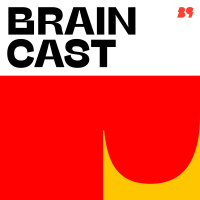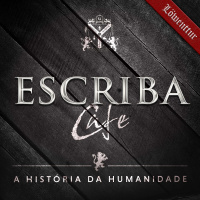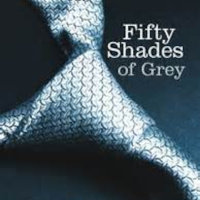Sinopsis
Interviews with Scholars of Hinduism with their New Books
Episodios
-
Peter Gottschalk, “Religion, Science, and Empire: Classifying Hinduism and Islam in British India” (Oxford UP, 2012)
13/04/2015 Duración: 01h03minWhen did religion begin in South Asia? Many would argue that it was not until the colonial encounter that South Asians began to understand themselves as religious. In Religion, Science, and Empire: Classifying Hinduism and Islam in British India (Oxford University Press, 2012), Peter Gottschalk, Professor of Religion at Wesleyan University, outlines the contingent and mutual coalescence of science and religion as they were cultivated within the structures of empire. He demonstrates how the categories of Hindu and Muslim were constructed and applied to the residents of the Chainpur nexus of villages by the British despite the fact that these identities were not always how South Asians described themselves. Throughout this study we are made aware of the consequences of comparison and classification in the study of religion. Gottschalk engages Jonathan Z. Smith’s modes of comparison demonstrating that seemingly neutral categories serve ideological purposes and forms of knowledge are not arbitrary in order.
-
Barbara Harriss-White, “Dalits and Adivasis in India’s Business Economy” (Three Essays Collective, 2013)
23/10/2014 Duración: 01h09minDalits and Adivasis in India’s Business Economy: Three Essays and an Atlas (Three Essay Collective, 2013) is a wonderful new book by Barbara Harriss-White and small team of collaborators – Elisabetta Basile, Anita Dixit, Pinaki Joddar, Aseem Prakash and Kaushal Vidyarthee – published by the Three Essays Collective. The book explores the ways in which economic liberalisation interacts with caste, specifically in reference to scheduled castes and scheduled tribes, otherwise known as Dalits and Adivasis. A truly unique book, both in terms of how the data has been gathered and presented, the essays are variously wide and deep and ask a host of questions to inspire future research.Learn more about your ad choices. Visit megaphone.fm/adchoices
-
Karen Pechilis, “South Asian Religions: Tradition and Today” (Routledge, 2012)
06/03/2014 Duración: 01h08minIf you’re going to teach a broadly themed survey course, you’ll probably need to assign some readings. One option is to assemble one of those photocopied course readers, full of excerpts taken from different sources. However, what you gain in flexibility may be sacrificed in coherence of presentation. A textbook produced by a single author might be more nicely packaged for student consumption, but then, how many different things can one author be an expert in? The best of both approaches would be found in a single-volume collection of essays, written by experts in their respective fields, newly commissioned for the volume in question, and all presented according to a shared format. Karen Pechilis and Selva J. Raj‘s South Asian Religions: Tradition and Today (Routledge, 2012) provides just such a collection, designed with both faculty and students in mind. Contributors to the book include Vasudha Narayanan, M. Whitney Kelting, Sunil Goonasekera, Nathan Katz, M. Thomas Thangaraj, Karen G. Ruff
-
Parna Sengupta, “Pedagogy for Religion: Missionary Education and the Fashioning of Hindus and Muslims in Bengal” (University of California Press, 2011)
24/01/2012 Duración: 01h11minWhat is the relationship between religion, secularization, and education? Parna Sengupta, Associate Director of Introductory Studies at Stanford University, explores their connections as she reexamines the categories religion, empire, and modernity. In her new book, Pedagogy for Religion: Missionary Education and the Fashioning of Hindus and Muslims in Bengal (University of California Press, 2011), she challenges the myth that Western rule secularized non-Western societies. Pedagogy for Religion focuses on missionary schools and their influence in Bengal from roughly 1850 to the 1930s. Sengupta’s conclusions are drawn from reading what she calls the “mundane aspects of schooling,” rather than high religious discourse. The replication of religious, gender, and social identities, as they were established through textbooks, objects, language, and teachers, redefined modern definitions of Hindus, Muslims, and Christians. Altogether, Sengupta demonstrates that modern education effectively deepene
-
Nile Green, “Bombay Islam: The Religious Economy of the West Indian Ocean, 1840-1915” (Cambridge UP, 2011)
15/07/2011 Duración: 01h08minBombay (Mumbai), India, is a city that has never lacked chroniclers from Rudyard Kipling to Salman Rushdie to Suketu Mehta, bards of pluralism have written about Bombay’s divers religions and peoples and the interactions between them. Now here comes a fantastic new book on the much touted ‘cosmopolitan culture,’ as the natives call it, of colonial Bombay- with a twist. Nile Green‘s well received Bombay Islam: The Religious Economy of the West Indian Ocean, 1840-1915 (Cambridge University Press, 2011) masterfully weaves together the dizzying varieties of Islams current in this port city -Islams that grew up as the Deccan, the Konkan, Gujurat, East Africa, Central, West and Southeast Asia all converged upon the crowded lanes and workshops of Bhendi bazaar, Haji Ali, Mazgaon, Chira Bazaar, Dongri. These neighbourhoods in turn exported systems of belief and practice wherever their denizens went beliefs that were themselves shaped and modified by the time they had spent, and the adherents














